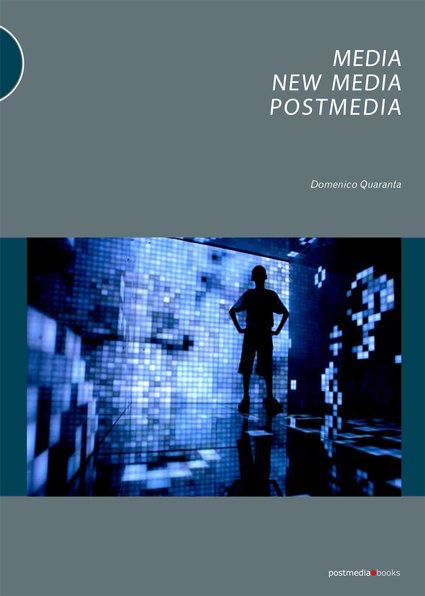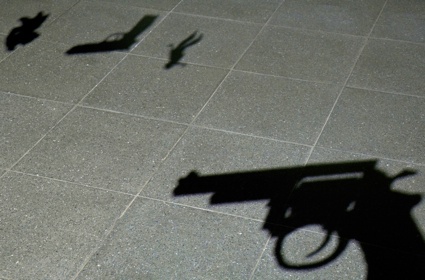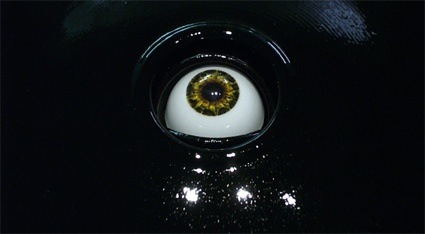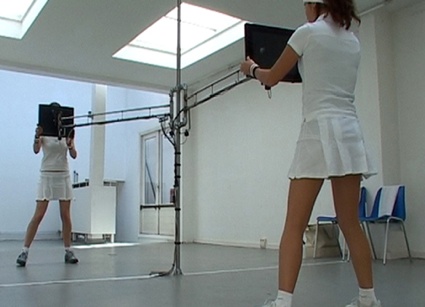Media, New Media, Postmedia, by Domenico Quaranta, published by Postmediabooks (available on amazon UK and Italy.)

The english abstract is available online, here’s just an abstract of it: Neither the label “New Media Art” nor the artistic practices it refers to were able to conquer the official art criticism or, more generally, the contemporary art world. Just a few works of New Media Art were able to enter the permanent collection of a museum, and even less were able to escape the limbo of the museum’s warehouses. New Media Art is more or less absent in the contemporary art market, as well as in mainstream art magazines; and recent accounts on contemporary art history completely forgot it.
How can we explain this segregation? Why “official” art criticism and history have still so many difficulties in integrating the artistic research on new media technologies into their interpretation of the art history of the Twentieth century, even now that this research can be considered in all its historic relevance? Why the art market, that was able to greet video, installation and performance, is still unable to accept and distribute artworks based in software, hardware or computer networks? Why many artists are so intolerant of the very term “New Media Art”, and of any attempt to stress its diversity? Why, on the other side, other artists are so proud of this diversity? Why New Media Art pretends to be “different” from contemporary art, and yet proudly reclaims its relationship with contemporary art’s very same roots, the Avant-gardes?
(…) Medium, New Media, Postmedia is the first attempt to give these questions a common, holistic answer. In order to reach the goal, this book starts discussing the current definition of New Media Art, making its weakness clear and suggesting a new definition that makes it possible to reconsider New Media Art’s historical development on a new basis and to better understand its recent developments and its positioning in contemporary culture.
But Medium, New Media, Postmedia is not just an attempt to explain the current status of the artistic research with new technologies, but also a militant endeavor to help it get the critical consideration it deserves; it’s not just a description of the present, but also an attempt to change the future, suggesting new critical and curatorial strategies.
 Paul Chan, 5th
Paul Chan, 5th Light 2007 (detail.) Photograph © Sylvain Deleu
It’s not every day that i feel like recommending a publication to anyone interested in new media art. No matter the depth of their involvement with new media art, no matter their degree of expertise. Whether you’re a student, an academic and someone who curates or collects contemporary art and is ‘just curious about new media art’, Media, New Media, Postmedia is one book you ought to read. The catch is that, so far, the book is available in italian only. The abstract i butchered above as well as the list of contents are available in english online. It’s not much but it should give you an idea of the breadth and tone of the publication. Media, New Media, Postmedia is a brave book, one that might ruffle a few feathers sometimes (but oh so elegantly!) The publication gives a carefully researched overview of the state of the ‘new media art vs contemporary art world’ debate, navigating deftly between opinions and ideas. As far as i know Media, New Media, Postmedia has no equal in english and i do hope Quaranta looks for and finds a publisher who will be willing to translate it.
Hopefully my review will be of interest not only to the 3 readers i have in Italy but also to other readers who might like to know what happens beyond the abstract and the list of contents. This is not going to be a thorough review nor a summary of the book but more of a way for me to digest it and highlight a series of ideas that help me keep the love/hate relationship i have with new media art on the healthy side.
The first three chapters lay the basis for the whole discussion. The first one looks into the definition of medium, of new media (art), but also delineates their identity and analyzes how pertinent these terms are. The second chapter traces the history of new media art from the 1960s to the early 1990s. The third chapter brings side by side the world of contemporary art and new media art. it is a rather painful confrontation as new media art seems to emerge as the eternal loser in terms of critical recognition and economic perspective.
 Golan Levin with Greg Baltus / Standard Robot Company, Opto-Isolator, 2007
Golan Levin with Greg Baltus / Standard Robot Company, Opto-Isolator, 2007
The last two chapters The boho dance: New Media Art and contemporary art and The postmedia perspective are where the action is at. The title of chapter 4 refers to the Art Mating Ritual (the Boho Dance then the Consummation) ironically described by Tom Wolfe in The Painted World. In this case, however, the attempts of new media art at seducing the contemporary art world have failed repeatedly and miserably. Quaranta analyzes the reason of this fiasco by going through a series of exhibitions in major art museums that celebrated the ‘newness’, ‘brightness’ and ‘avant-garde’ of new media but never quite met with the respect of contemporary art critics and curators, due too often to the excessive focus on the technological perspective rather than on the art perspective of the works exhibited. Apart from a few exceptions, new media art has not yet found a comfortable place in art institutions and public or private collections. According to Quaranta, the usual excuses brought forward do not stand a close observation. Is reproducibility the culprit? No, think of the limited editions of photos, and of the price that a print by Cindy Sherman or Andreas Gursky reaches at auctions. Is it because of the ephemeral nature of many of the works? That didn’t prevent Damien Hirst’s shark to get the icon (read ‘bankable’) status it has nowadays. Is it the rapid obsolescence of the material used in new media art works? Quaranta replies with the example of VHS video works that have been transferred onto digital support and of neon installations by Dan Flavin that cannot use the original red neon anymore because in the meantime it was discovered that that particular shade is toxic. The real problem of new media art is that many in the contemporary art world have doubts about its value as art and as an investment.
The final chapter, The postmedia perspective, opens by laying the blame of the foul reputation of new media art on art critics and curators. On the one hand, the new media art world has tried to impose on the rest of the art world the criteria used internally to appreciate a work. Moreover, they have failed to do justice to new media art by presenting it as a uniform phenomenon instead of the heterogeneous reality that it is. On the other hand, many contemporary art critics have failed to go beyond the technological aspect of the works of new media art. Or they have also seen it a ‘uniform phenomenon’ and condemned it as a whole.
What unifies new media art is not the use of ‘the media’, it is its familiarity with the cultural impact that these media have had on society.
 Dirk Eijsbouts , Interface #4 TFT, Tennis V180, 2004
Dirk Eijsbouts , Interface #4 TFT, Tennis V180, 2004
For Quaranta, the New Media art world should turn its frustrating complex of inferiority into a virtue: that is, to act as an incubator for art forms that wouldn’t be accepted at a first stage by the mainstream art world. He gives as an example Tft Tennis v180°, an installation typical of ars electronica ‘gadgetry’. It might not stand raise up to the standards of a contemporary art critic, but it has value as a prototype ahead of game research, as a precursor that paved the way for the Wii. Without new media art, works like this one would struggle to find a suitable context to be produced, exhibited and discussed.
As i mentioned above, Media, New Media, Postmedia is a book that required audacity. And it took someone like Domenico Quaranta, a critic and curator whose involvement and respect for new media art doesn’t need to be proved any more and who has rubbed shoulders with the contemporary art world, to dissect and appraise in a way that was at time harsh the world of new media art. I suspect it was sometimes a distressing process but one that was necessary if new media art wants to get rid of the stereotypes, weaknesses and misunderstandings that weights it down.
Unsurprisingly, i’m going to end with the conclusion, not mine, but the one Quaranta has written in the abstracts:
Check out the blog Media, New Media, Postmedia.
Domenico Quaranta is a contemporary art critic and curator whose research focuses on the impact of the current techno-social developments on the arts. He’s a prolific writer, his articles and essays have appeared in numerous magazines and he has written and contributed to many books and catalogues. I was particularly enthusiastic about GameScenes. Art in the Age of Videogames which he authored together with Matteo Bittanti. You can either download for free or get as a print on demand his recent In Your Computer, a collection of texts he wrote between 2005 and 2010 for exhibition catalogues, printed magazines and online reviews.
He curated and co-curated a number of exhibitions all over Europe (right now you can see ITALIANS DO IT BETTER!! at the Venice Biennale.) Domenico Quaranta is the Director of the MINI Museum of XXI Century Arts and a founding member and Artistic Director of the very promising and much needed on the Italian territory LINK Center for the Arts of the Information Age. If all of the above were not enough, he also lectures internationally and teaches “Net Art” at the Accademia di Belle Arti di Brera in Milan.
Image on the homepage: Mission Eternity by etoy.CORPORATION.
